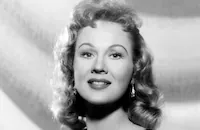Revolt of the Mercenaries
Cast & Crew
Piero Costa
Virginia Mayo
Conrado Sanmartin
Susana Canales
Livio Lorenzón
Carla Calò
Film Details
Technical Specs

Synopsis
While traveling to Venice for her wedding to Prince Stefano, widowed duchess Lady Patrizia meets Lucio di Rialto, leader of a band of mercenaries. Later, Lucio returns a jewel that one of his men stole from her, and Patrizia invites him to a feast. Keller, one of Patrizia's neighbors, wants her money, and Lucio offers to protect the duchess from his advances. When Lucio is offered more money to side with Keller, he accepts, and the startled Patrizia accelerates her wedding plans, even though she is attracted to her former protector. Lucio is imprisoned after a second clash with his new master but escapes to rescue Patrizia's wedding party from an attack by Keller's forces. After he slays Keller in a duel, Lucio is reunited briefly with the duchess and admits to her that he could never adapt to her way of life. As he rejoins his men, Lucio finds solace with Katia, a woman who has always loved him.

Director
Piero Costa
Cast

Virginia Mayo
Conrado Sanmartin
Susana Canales
Livio Lorenzón
Carla Calò
Tomas Blanco
Franco Fantasia
Alfredo Mayo
John Kitzmiller
Luciano Benetti
Marco Tulli
Alberto Tedecco
Crew

Film Details
Technical Specs

Articles
Virginia Mayo (1920-2005)
She was born Virginia Clara Jones in St. Louis, Missouri on November 30, 1920, and got her show business start at the age of six by enrolling in her aunt's School of Dramatic Expression. While still in her teens, she joined the nightclub circuit, and after paying her dues for a few years traveling across the country, she eventually caught the eye of movie mogul Samuel Goldwyn. He gave her a small role in her first film, starring future husband, Michael O'Shea, in Jack London (1943). She then received minor billing as a "Goldwyn Girl," in the Danny Kaye farce, Up In Arms (1944). Almost immediately, Goldwyn saw her natural movement, comfort and ease in front of the camera, and in just her fourth film, she landed a plumb lead opposite Bob Hope in The Princess and the Pirate (1944). She proved a hit with moviegoers, and her next two films would be with her most frequent leading man, Danny Kaye: Wonder Man (1945), and The Kid from Brooklyn (1946). Both films were big hits, and the chemistry between Mayo and Kaye - the classy, reserved blonde beauty clashing with the hyperactive clown - was surprisingly successful.
Mayo did make a brief break from light comedy, and gave a good performance as Dana Andrews' unfaithful wife, Marie, in the popular post-war drama, The Best Years of Their Lives (1946); but despite the good reviews, she was back with Kaye in The Secret Life of Walter Mitty (1947), and A Song Is Born (1948).
It wasn't until the following year that Mayo got the chance to sink her teeth into a meaty role. That film, White Heat (1949), and her role, as Cody Jarrett's (James Cagney) sluttish, conniving wife, Verna, is memorable for the sheer ruthlessness of her performance. Remember, it was Verna who shot Cody¿s mother in the back, and yet when Cody confronts her after he escapes from prison to exact revenge for her death, Verna effectively places the blame on Big Ed (Steve Cochran):
Verna: I can't tell you Cody!
Cody: Tell me!
Verna: Ed...he shot her in the back!!!
Critics and fans purred over the newfound versatility, yet strangely, she never found a part as juicy as Verna again. Her next film, with Cagney, The West Point Story (1950), was a pleasant enough musical; but her role as Lady Wellesley in Captain Horatio Hornblower R.N. (1951), co-starring Gregory Peck, was merely decorative; that of a burlesque queen attempting to earn a university degree in the gormless comedy, She¿s Working Her Way Through College (1952); and worst of all, the Biblical bomb, The Silver Chalice (1954) which was, incidentally, Paul Newman's film debut, and is a film he still derides as the worst of his career.
Realizing that her future in movies was slowing down, she turned to the supper club circuit in the 60s with her husband, Michael O'Shea, touring the country in such productions as No, No Nanette, Barefoot in the Park, Hello Dolly, and Butterflies Are Free. Like most performers who had outdistanced their glory days with the film industry, Mayo turned to television for the next two decades, appearing in such shows as Night Gallery, Police Story, Murder She Wrote, and Remington Steele. She even earned a recurring role in the short-lived NBC soap opera, Santa Barbara (1984-85), playing an aging hoofer named "Peaches DeLight." Mayo was married to O'Shea from 1947 until his death in 1973. She is survived by their daughter, Mary Johnston; and three grandsons.
by Michael T. Toole

Virginia Mayo (1920-2005)
Quotes
Trivia
Notes
Opened in Rome in August 1962 as La rivolta dei mercenari; running time: 100 min; in Madrid in April 1962 as Los mercenarios.














